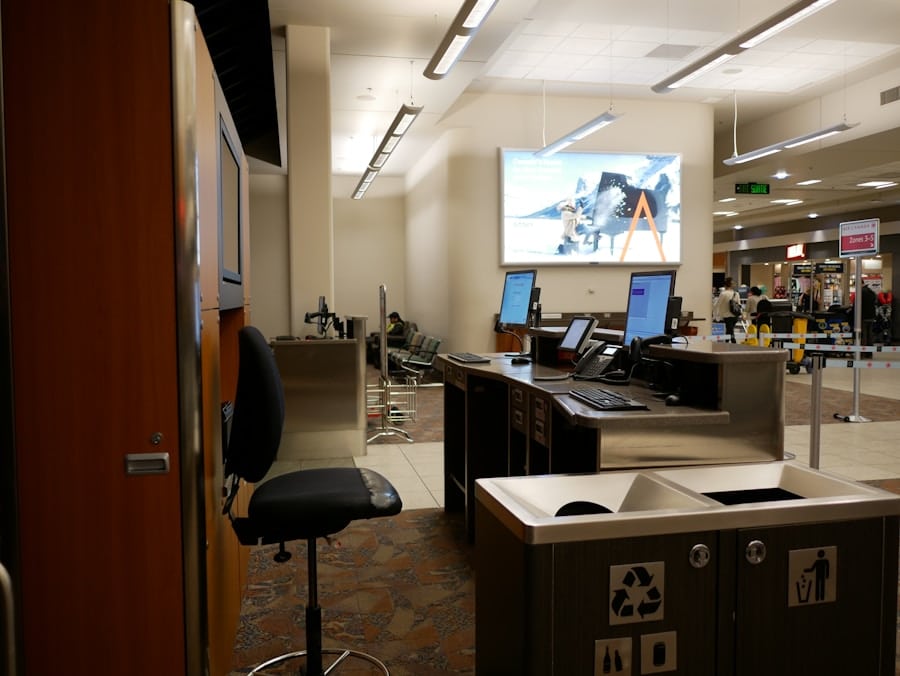The emergence of digital campuses marks a significant transformation in the landscape of higher education. Over the past decade, advancements in technology have catalyzed a shift from traditional brick-and-mortar institutions to virtual learning environments. This transition has been accelerated by the global pandemic, which forced universities to adapt quickly to remote learning.
As a result, many institutions have begun to recognize the potential of digital campuses not just as a temporary solution, but as a viable long-term strategy for delivering education. The rise of online platforms, coupled with the increasing acceptance of digital credentials, has paved the way for a new era in academia. Digital campuses offer a plethora of opportunities for both students and educators.
They provide flexibility in learning, allowing students to access course materials and participate in discussions from anywhere in the world. This accessibility is particularly beneficial for non-traditional students, such as working professionals or those with family commitments, who may find it challenging to attend classes on a physical campus. Furthermore, the integration of multimedia resources and interactive tools enhances the learning experience, making it more engaging and tailored to individual needs.
As universities continue to invest in these virtual spaces, the potential for innovation and growth within the educational sector becomes increasingly apparent.
Key Takeaways
- The rise of digital campuses signifies a shift towards virtual spaces for learning and collaboration.
- Virtual learning environments offer advantages such as flexibility, accessibility, and cost-effectiveness for universities.
- Challenges and limitations of digital campuses include technological barriers, lack of in-person interaction, and potential for digital divide.
- Universities are embracing innovations in technology such as virtual reality, artificial intelligence, and online collaboration tools to enhance the digital campus experience.
- Creating a sense of community in the digital campus is crucial for student engagement and well-being, and requires intentional efforts from universities.
Advantages of Virtual Learning Environments for Universities
One of the most significant advantages of virtual learning environments is their ability to reach a broader audience. Traditional universities often face geographical limitations that restrict enrollment numbers. In contrast, digital campuses can attract students from diverse backgrounds and locations, effectively breaking down barriers to education.
Additionally, universities can offer a wider range of courses and programs without the constraints of physical space, allowing them to cater to various interests and career paths. Cost-effectiveness is another compelling reason for universities to embrace virtual learning environments.
Operating expenses associated with maintaining physical campuses—such as utilities, maintenance, and staffing—can be significantly reduced when transitioning to a digital model. These savings can be redirected towards enhancing educational resources, investing in technology, or providing financial aid to students. Moreover, online courses often have lower tuition fees compared to their in-person counterparts, making higher education more accessible to a larger population.
This financial flexibility can lead to increased enrollment and retention rates, ultimately benefiting the institution’s bottom line.
Challenges and Limitations of Digital Campuses
Despite the numerous advantages of digital campuses, several challenges and limitations must be addressed to ensure their effectiveness. One major concern is the potential for decreased student engagement and motivation in an online setting. The absence of face-to-face interaction can lead to feelings of isolation among students, which may hinder their academic performance and overall satisfaction with their educational experience.
Additionally, some learners may struggle with self-discipline and time management when navigating online coursework without the structure provided by traditional classroom settings. Another significant challenge is the digital divide that persists in many regions around the world. While technology has become increasingly ubiquitous, not all students have equal access to reliable internet connections or devices necessary for participating in online courses.
This disparity can exacerbate existing inequalities in education, leaving some students at a disadvantage compared to their peers.
As institutions navigate these challenges, it becomes crucial to develop strategies that promote engagement and ensure equitable access for all students.
Innovations in Technology: How Universities are Embracing Virtual Spaces
As universities adapt to the demands of digital campuses, they are increasingly leveraging innovative technologies to enhance the online learning experience. One notable trend is the incorporation of artificial intelligence (AI) into educational platforms. AI-driven tools can provide personalized learning experiences by analyzing student performance data and offering tailored recommendations for improvement.
For instance, adaptive learning systems can adjust the difficulty level of assignments based on individual progress, ensuring that students remain challenged yet supported throughout their academic journey. Virtual reality (VR) and augmented reality (AR) are also gaining traction in higher education as universities seek to create immersive learning experiences. These technologies allow students to engage with course material in dynamic ways that transcend traditional methods of instruction.
For example, medical students can practice surgical techniques in a simulated environment, while architecture students can explore 3D models of their designs. By embracing these cutting-edge technologies, universities not only enhance student engagement but also prepare graduates for careers in an increasingly tech-driven world.
Creating a Sense of Community in the Digital Campus
Fostering a sense of community within digital campuses is essential for promoting student engagement and retention. In traditional settings, social interactions occur naturally through campus events, study groups, and informal gatherings. However, replicating this sense of belonging in an online environment requires intentional strategies and initiatives.
Universities can facilitate community-building by creating virtual spaces where students can connect outside of formal coursework. Online forums, social media groups, and virtual events can serve as platforms for students to share experiences, collaborate on projects, and form friendships. Moreover, mentorship programs can play a vital role in cultivating community within digital campuses.
By pairing students with faculty members or industry professionals, universities can provide guidance and support that extends beyond academic advising. These relationships can help students navigate their educational journeys while also fostering a sense of belonging within the institution. Additionally, incorporating team-based projects into online curricula encourages collaboration among peers, further strengthening connections within the digital campus community.
Ensuring Accessibility and Inclusivity in Virtual Learning Environments
Accommodating Diverse Learning Needs
Implementing universal design principles can help accommodate diverse learning needs. For instance, providing captioning for video lectures and offering alternative formats for course materials, which can help support students with disabilities or those who may struggle with traditional learning methods.
Seeking Student Feedback
Universities should actively seek feedback from students regarding their experiences in digital learning environments. Conducting surveys or focus groups can provide valuable insights into potential barriers that may hinder participation or engagement.
Creating Inclusive Online Spaces
By addressing these concerns proactively, institutions can create more inclusive online spaces that cater to the needs of all learners. Additionally, training faculty members on best practices for inclusive teaching can further enhance the effectiveness of virtual learning environments.
The Future of Digital Campuses: Predictions and Trends
As digital campuses continue to evolve, several trends are likely to shape their future trajectory. One prediction is the increasing integration of hybrid learning models that combine online and in-person instruction. This approach allows universities to leverage the benefits of both formats while providing flexibility for students who may prefer face-to-face interactions at certain times.
Hybrid models can also facilitate experiential learning opportunities that are difficult to replicate in a purely online setting. Another trend is the growing emphasis on lifelong learning and professional development within digital campuses. As industries rapidly change due to technological advancements, individuals are seeking opportunities to upskill or reskill throughout their careers.
Universities are likely to respond by offering more short-term courses, micro-credentials, and certificate programs that cater to working professionals looking to enhance their qualifications without committing to full degree programs. This shift will not only expand access to education but also align academic offerings with the evolving needs of the workforce.
Best Practices for Universities Launching Digital Campuses
For universities embarking on the journey of launching digital campuses, several best practices can guide their efforts toward success. First and foremost, institutions should prioritize user-friendly technology that enhances the student experience rather than complicating it. Investing in intuitive learning management systems (LMS) that streamline course navigation and communication can significantly improve student satisfaction.
Additionally, universities should focus on providing comprehensive support services tailored specifically for online learners. This includes academic advising, technical support, and mental health resources that are easily accessible through digital platforms. By ensuring that students have access to necessary support systems, institutions can foster a positive online learning environment that encourages persistence and success.
Finally, continuous evaluation and improvement should be integral components of any digital campus initiative. Regularly assessing course effectiveness through student feedback and performance metrics allows universities to identify areas for enhancement and adapt their offerings accordingly. By remaining responsive to student needs and technological advancements, institutions can create dynamic digital campuses that thrive in an ever-changing educational landscape.
If you are interested in exploring the world of digital technology further, you may want to check out this comprehensive guide on the best music production software available on the market today. This article provides valuable insights into the top software options for music producers looking to create high-quality tracks. Additionally, if you are in need of a reliable laptop to support your digital endeavors, you may want to read up on the best Apple laptops for 2023. These articles offer valuable information for individuals looking to enhance their digital experiences and stay ahead in the ever-evolving technological landscape. Best Music Production Software: A Comprehensive Guide The Best Apple Laptops 2023
FAQs
What are digital campuses in virtual spaces?
Digital campuses in virtual spaces are online platforms that replicate the physical campus environment of a university. These platforms allow students to attend classes, interact with professors and peers, access resources, and participate in campus activities virtually.
How are universities launching digital campuses in virtual spaces?
Universities are launching digital campuses in virtual spaces by partnering with technology companies to develop and implement online platforms that offer a range of features such as virtual classrooms, interactive learning tools, virtual libraries, and social spaces for students to connect.
What are the benefits of digital campuses in virtual spaces?
The benefits of digital campuses in virtual spaces include increased accessibility for students who may not be able to attend classes in person, flexibility in scheduling, the ability to reach a wider audience of students, and the opportunity to incorporate innovative teaching methods and technologies.
What challenges do universities face in launching digital campuses in virtual spaces?
Universities may face challenges in launching digital campuses in virtual spaces, such as ensuring the security and privacy of online platforms, providing adequate technical support for students and faculty, and adapting traditional teaching methods to an online environment. Additionally, universities may need to consider the digital divide and ensure that all students have access to the necessary technology and internet connectivity.



